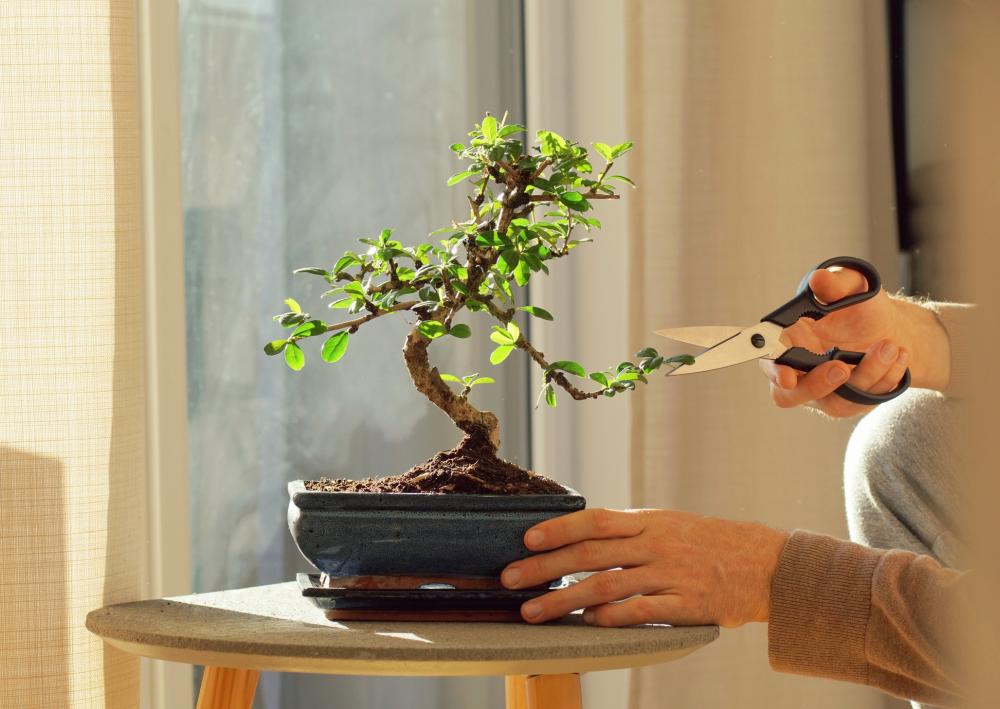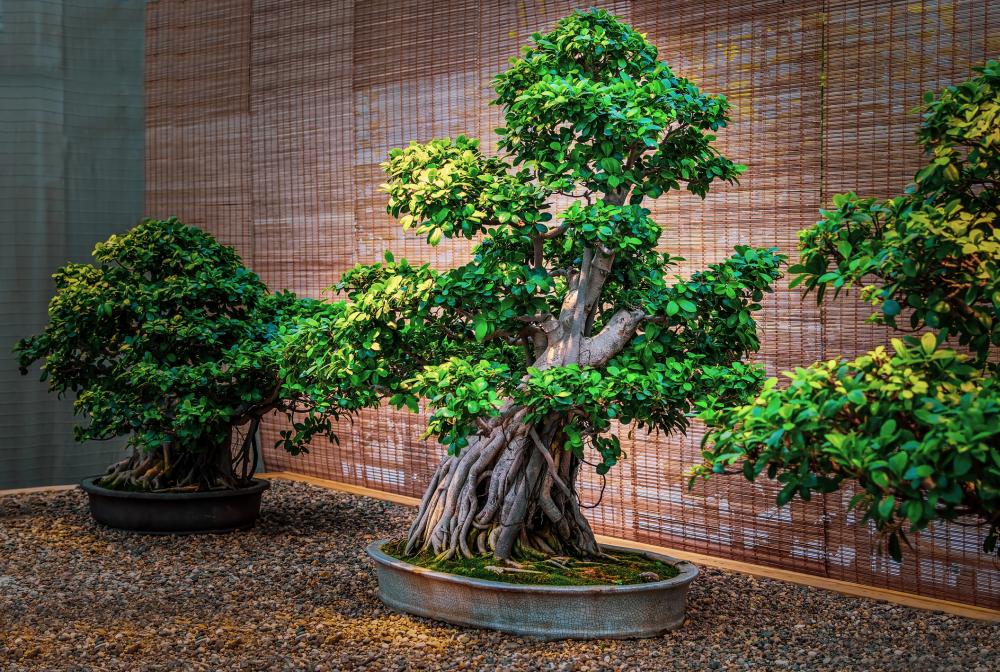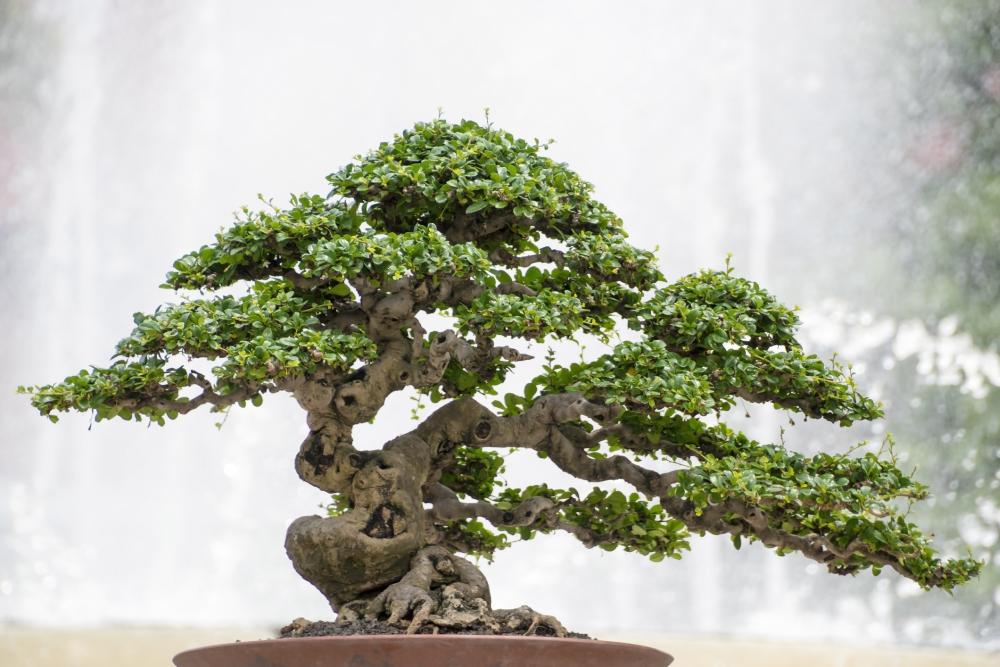5 Bonsai Tree Growing Problems And Solutions
Bonsai tree growing is a delicate art that consumes whole lives. But it’s definitely worth it. When you care for a tree and painstakingly tend to it regularly to keep its compact size, you develop a bond with the tree that can last for a lifetime. It’s like an enduring relationship that grows stronger the more time and work you invest into it.
But if growing a regular tree comes with its own set of problems, bonsai trees’ growing problems are a little more complex. While a regular tree is more forgiving and can tolerate the occasional overwatering or drought, the bonsai tree is quite sensitive to the growing conditions around it. A pruning mistake can be easily fixed in a large tree, but the bonsai will carry the scar for life. We put together the main bonsai trees’ growing problems and recommended some solutions for each problem.
Bonsai Trees and Light Conditions
Bonsai trees need as much sun as the next tree. And while the specific light needs of the bonsai vary depending on its species, it will still need a few hours of sun exposure every day during the growing seasons. So what happens if the bonsai doesn’t get its daily dose of sunlight or when it gets too much?
Poor light conditions can impact the growth and health of the bonsai tree. The leaves of the bonsai absorb the sunlight and turn it into energy that the tree uses to grow and maintain damaged branches and roots. But at the same time, too much sun can have adverse effects on the foliage. Exposure to hot sun for long hours could lead to leaf burn. Not to mention that it would dry out the soil and increase the temperature in the pot or terrarium.
How to Fix It
Since the issue of light conditions is a complex one, you’ll need to strike a balance between satisfying the bonsai tree’s needs for sunlight and protecting it from the glare and heat that too long sun exposure can bring. Here are a few steps you can take to ensure the bonsai tree has ideal light conditions.
- During the dog days of summer, you’d want to shield the bonsai tree from the noon and afternoon sun. Drawing a lace curtain across the window will filter the light coming in and cut down the amount of UV light the bonsai is exposed to.
- Make sure that air circulation is good around the bonsai to prevent mold and fungus buildup. Keeping a window open will create a good air current that keeps humidity levels down.
- If the tree or the soil is getting heated up, you can mist the bonsai tree in the afternoon to cool it down and prevent soil from drying up.
- Light deprivation is a recurring issue for bonsai trees kept indoors all the time. This impacts the tree’s growth and reflects on the pale or yellowing leaves. So take the bonsai outdoors regularly during the growing seasons.
- Use LED grow lights to compensate for the lack of sunlight exposure. It will improve the tree’s health and make it less prone to diseases and infections.
Bonsai Trees Watering Problems
The water requirements of the bonsai tree vary by season and stage of life. Younger trees might need more water than aged bonsai trees. That’s because the young bonsai has a faster growth rate and needs to develop its root system and branches. But an established bonsai needs less water. Again it depends on the species and growing conditions. A bonsai tree in a glass terrarium will have fewer water needs than one growing in a pot.
To complicate things further, the size of the tree and the soil type all play a role in how much watering and how frequently you should irrigate the bonsai. It’s like navigating a minefield where overwatering carries a penalty of health issues, and underwatering causes stress and makes the bonsai more prone to infections and diseases.
How to Fix It
You’ll need to pay close attention to how fast the soil absorbs the water and how soon the soil dries out. Then look for signs of stress related to too much or too little water. An overwatered soil will stay wet 5 to 7 days after watering it. While a bonsai struggling with drought will have yellowing and drooping leaves. Follow these tips to give your bonsai tree the right amounts of water at the right times.
- Check the soil before you decide to water the bonsai. If the top 2 inches of the soil are dry, give the tree enough water to make the soil moist. If more than 2 inches of the soil are dry, the tree needs more frequent watering.
- Make sure the container has drainage holes at the bottom to prevent waterlogging. If the soil stays wet for a few days after watering, then the container doesn’t have enough drainage holes. Replace it with a pot with larger holes.
- Watch for signs of stress due to dehydration and adjust your watering patterns and frequency accordingly.
- Don’t water the bonsai when it’s stressed due to high temperature or lack of air circulation.
- The best time to water the bonsai is in the morning before the sun heats up the soil and the leaves.
- Don’t use filtered or processed water with the bonsai tree. Rainwater is ideal since it contains all the natural minerals without the added chemicals that come with tap water.
Bonsai Trees and High Temperature
One thing to always remember when caring for your bonsai tree is that it doesn’t get the same amount of fresh air and breeze that a regular tree in the garden does. That makes the bonsai more sensitive to the temperature fluctuations around it. This includes air and soil temperature.
High air temperature can cause the bonsai a lot of stress as it loses moisture at fast rates through the pores on the surface of the leaves. And heated soil can practically fry the roots of the bonsai.
The main source for high temperatures is usually the sun. Prolonged exposure to the sun during the summer months can have serious effects on the tree. But the sun is not the only source of heat. Having a source of heat near the bonsai can raise the temperature in the air, not to mention the greenhouse effect. So what can you do to ensure the tree is having ideal temperatures and everything is hunky-dory?
How to Fix It
Perhaps the easiest way to avoid causing stress to the bonsai tree due to high temperatures is to move it away from any sources of heat in the room. Increased temperature can lead to early dormancy, where the tree will stop growing for as long as the temperature around it is too high. Here are a few steps to take to prevent that.
- If the bonsai is outdoors and exposed to direct sunlight during the summer months, you would need to take it inside when and keep it in the shade until the temperature drops.
- Install blinds on the window nearest to the bonsai tree to cut down on the glare and sun exposure in the afternoon.
- Place a fan and train it toward the general direction of the bonsai to reduce the heat buildup and improve air circulation.
- Mist the leaves to prevent moisture loss and keep the bonsai hydrated.
- Low temperatures can also send the tree into early dormancy. Keep the tree warm by wrapping the trunk with a thick towel until the cold spell blows over.
Pruning and the Bonsai Tree
It’s no secret that pruning is the vital process by which you give the bonsai tree its distinct shape, size, and features. More than the watering can and feeding bag, your pruning shears would be the tools most used during the life of the bonsai tree. If you water it once a week and feed it every couple of weeks, you’re likely to prune it a few times a week during the pruning time. But your pruning has to be judicious and deliberate. Every snip of the shears should have a single goal. It’s a delicate process that takes a lot of skill and experience to avoid over-pruning the bonsai. And remember that one mistake could change the appearance of the bonsai tree forever.
How to Fix It
Pruning the bonsai shouldn’t be taken lightly. Some bonsai trees are more sensitive to pruning than others. And here again, the species of the tree will determine not just the amount of pruning required but also the time to conduct such pruning. Here are a few general guidelines to heed regardless of the species of the bonsai.
- Always use sterilized tools to prune the tree. This avoids contaminating the bonsai with pathogens that could be lethal.
- Don’t use any pair of scissors lying around. Use proper pruning shears that are suitable for the tree species and take the age of the bonsai and how developed it is into consideration.
- Consult an experienced bonsai horticulturalist about the best pruning practices for your specific bonsai tree.
- Plan your pruning strategy well in advance. If you’re not sure about a move, don’t go ahead and make a cut.
- Keep the grafting paste handy while pruning to speed up the bonsai tree’s healing process.
- Some light pruning can be an ongoing process, but the bulk of the pruning should be reserved for the right time. This right time depends on the tree’s species and dormancy patterns.
Bonsai Tree And Soil Types
Since the bonsai tree grows in a limited amount of soil contained in a pot, the soil type and its suitability become even more crucial than is the case for, say, a regular tree. That’s because the soil contains the nutrients and moisture necessary for the bonsai to grow and prosper. And being a small quantity of soil, the nutrients can get depleted quickly, and the moisture dries out faster than the soil in the garden.
And because repotting a bonsai tree is a regular task you perform, getting the right type of soil is crucial for the success of the bonsai. Unlike a tree growing in the wild with roots delving deep in the seemingly unlimited earth strata, you’ll need to change the soil frequently for the bonsai tree. So if you fill the pot by mistake with the wrong type of soil, this could prove detrimental to the bonsai that you’ve spent years cultivating and shaping.
How to Fix It
More than any other potted plant, the bonsai tree requires well-drained soil. To achieve that, you need not only choose the right soil texture but also ensure that the container itself improves the water drainage. Here are a few considerations to keep in mind when picking the right soil for your bonsai tree.
- The soil should have a loose texture that promotes high aeration qualities and good drainage. Almost all bonsai trees, regardless of their species, would require these qualities in the soil.
- Line up the bottom of the container with some pebbles to prevent the soil from blocking the drainage holes.
- If you don’t have enough experience with mixing your bonsai soil, consider purchasing readily mixed soil for your bonsai tree.
- Change the soil every time you repot the bonsai tree.
- Use sterilized and pathogen-free soil that you get from reputable sources.


